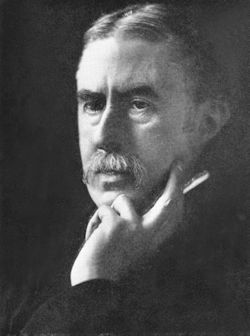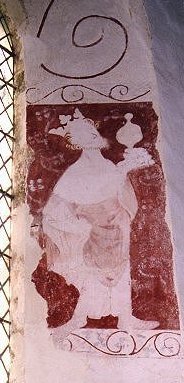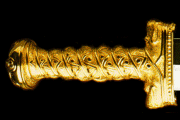Page 8 of 12
The Templars and the Ark of the Covenant

Burton Dassett Church, originally built by the Templars in the 1330s.
Unlike the ruined chapel at Temple-Herdewyke, the medieval All Saints Church is not only well preserved it is still in use today. It stands on the hillside at the edge of the tiny hamlet of Burton Dassett, after which the upland is named.
If the Herdewyke Templars had possessed holy relics that they had managed to keep from the clutches of Edward II, then it would have made sense for them to hide these at the time of the Black Death. It was quite possible that, knowing their end was nigh, the Templars had hidden their precious possessions in the hope of preserving them intact. Indeed, many monastic communities are known to have done just this. A number of hoards of gold and silver vessels have been found by archaeologists over the years, believed to have been hidden by monks threatened by the plague. In fact, in the late 1800s a local antiquarian named Jacob Cove-Jones, from the village of Loxley in Warwickshire, claimed that the Templars had actually left clues in the church to reveal the whereabouts of the legendary treasure.
The Mysterious Murals
Right: Jacob Cove-Jones, the amateur historian and archaeologist who claimed to know where the Ark of the Covenant was hidden.
In 1327, five years after they had been outlawed and thrown from their land by Edward II, the Herdewyke Templars helped depose the king by aiding his queen, Isabella of France, who placed her young son Edward III on the throne as puppet king. In gratitude, the queen granted these Templars amnesty although their lands were not returned. As their preceptory was now in the possession of rival landowners, the Templars raised the money to build a new church in the village of Burton Dassett, one-and-a-half miles to the southeast, up on the Burton Dassett Hills. By this time purely a religious order (the Knights Templar had long ceased to be a military organization), the men required the church for their devotions. Sadly, these peaceful Templars did not survive long. In 1350, they and the entire Burton Dassett community were killed off by the Black Death.

After the Black Death, the church had been abandoned for some years before coming back into use as a Roman Catholic church. During the English Reformation in the fifteenth century, it had been taken over by the Protestant Church of England and had become the Anglican parish church of the district. During repairs to the building in 1890, the plaster was removed from the internal walls to reveal some ancient decorations hidden for centuries to either side of the north transept window. They were crude depictions of two human figures wearing crowns, accompanied by a series of faded inscriptions written in Latin. As they dated from around 1350, the time of the Black Death, Jacob Cove-Jones was convinced that they held a coded message to lead to the hidden treasure.


When Graham visited the church, he soon accepted that Jacob Cove-Jones may have been on to something. The paintings depicted two crowned figures, one holding a severed head, the other a chalice. The angels on the lid of the Ark of the Covenant were said to have represented archangels Michael and Gabriel, who themselves are often depicted, one with a severed head and the other with a chalice or water container. If the Templars treasure had included the Ark of the Covenant then these two figures may have been used as part of the code to reveal their whereabouts. In fact, Jacob Cove-Jones had propounded more than just the belief that these paintings were clues to the whereabouts of the treasure; he also claimed to have cracked the code and knew where they were hidden.
The mysterious murals to either side of the north transept window in Burton Dassett Church.








